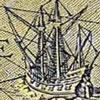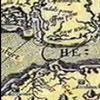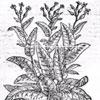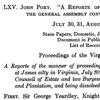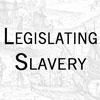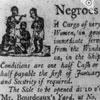The shift from dependence on indentured servitude for labor to slavery did not happen overnight. Slavery existed in the Americas well before the 1600s, especially in the Spanish colonies in Central and South America. The number of slaves in Virginia, however, remained small and the terms of servitude varied until the late 17th century. Only in the first half of the 18th century did slavery became the entrenched system typically depicted in Virginia history. Legislation in Virginia throughout the 17th century details the evolution of slavery as a system, as seen through the growing number of laws designed to define and control slaves.
Acts of Assembly, Dec 1662: Act XII and Sept 1667: Act III
December, 1662, Act XII.
Negro womens children to serve according to the condition of the mother.
WHEREAS some doubts have arrisen whether children got by any Englishman upon a negro woman should be slave or ffree, Be it therefore enacted and declared by this present grand assembly, that all children borne in this country shalbe held bond or free only according to the condition of the mother, And that if any christian shall committ ffornication with a negro man or woman, hee or shee soe offending shall pay double the ffines imposed by the former act.
September, 1667, Act III.
An act declaring that baptisme of slaves doth not exempt them from bondage.
WHEREAS some doubts have risen whether children that are slaves by birth, and by the charity and piety of their owners made pertakers of the blessed sacrament of baptisme, should by vertue of their baptisme be made ffree; It is enacted and declared by this grand assembly, and the authority thereof, that the conferring of baptisme doth not alter the condition of the person as to his bondage or ffreedome; that diverse masters, ffreed from this doubt, may more carefully endeavour the propagation of christianity by permitting children, though slaves, or those of greater growth if capable to be admitted to that sacrament.
A useful way to approach these laws is to ask: What problem were they trying to address? What solution did they propose? Listen as Georgetown University Professor Adam Rothman addresses these questions in his analysis of the 1662 law regarding the status of the children of slaves.
The second law, from 1667, seems to expand the 1662 law by addressing the question of whether a slave’s status was based on race or religion. Could a slave convert to Christianity to gain his or her freedom? According to the 1667 law, the answer was no. A slave would remain a slave even if he or she converted to Christianity. This effectively established the racial basis of slavery in Virginia.
Source: William Waller Hening, "Acts of Assembly, Dec 1662: Act XII,” statute, December 1662, Hening’s Statutes at Large, accessed September 20, 2011; Hening, “Acts of Assembly, Sep 1667: Act III,” statute, September 1667, Hening’s Statutes at Large, accessed September 20, 2011; Adam Rothman, “Slavery [lecture],” Roy Rosenzweig Center for History and New Media (Fairfax, VA, 2006), accessed September 20, 2011. Full video in Roy Rosenzweig Center for History and New Media and Loudoun County Public Schools, “Slavery,” Foundations of U.S. History, accessed September 16, 2011.



